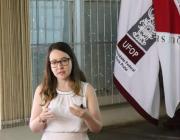Citation:
Abstract:
UNLABELLED: SUMMARY-BACKGROUND: The present study investigates the hypothesis that cells from ill patients and from healthy subjects may have different reactivity under metabolic stimulation as a consequence of an disease-induced metabolic adaptation.
METHODS: Granulocytes either from healthy subjects or from type II-Non Insulin Dependent Diabetes Mellitus (NIDDM) patients were compared in their capacities to generate Reactive Oxygen Species (ROS). The ROS generation was comparatively determined in a chemiluminescence assay, luminol-dependent, after cell incubation in the presence of either cyclic AMP - elevating agents or Interleukin 10. In some experiments the cells were pretreated with H89 compound (a PKA inhibitor) or with diphenylene iodonium (DPI), a NADPH-oxidase inhibitor.
RESULTS: Our results showed an increased ROS generation in granulocytes from diabetic patients in absence of cyclic AMP-elevating agents or IL-10. In the presence of cyclic AMP-elevating agents was observed an inverse metabolic response in granulocytes from diabetic patients in comparison to cells from healthy subjects. The granulocytes were pre-incubated in the presence of cyclic AMP-elevating agents--amminophylline (AMF) or dibutyryl cyclic AMP (dbcAMP)--or interleukin 10 (IL-10). The AMF, dbcAMP and IL-10 inhibited ROS production by granulocytes from healthy subjects. By contrast, AMF and dbcAMP activated cells from diabetic patients while IL-10 had no effect. The inhibition of ROS induced by AMF, dbcAMP or IL-10 was promptly abolished by the pretreatment of the cells with either PKA H89 inhibitor or NADPH-oxidase inhibitor (DPI) in granulocytes from healthy subjects. In relation to the granulocytes from type 2 diabetics patients, the activation of ROS generation mediated by AMF and dbcAMP was fully abolished by NADPH-oxidase DPI-inhibitor, but not by PKA H89 inhibitor.
CONCLUSIONS: Our present results reinforce the hypothesis that cells from ill patients (type II diabetic) when compared to cells from healthy subjects have different reactivity under metabolic stimulation. ROS production by human granulocytes was modulated by cyclic AMP elevating agents and IL-10. The inhibition of the ROS production in cells from healthy subjects was PKA-dependent while the activation in granulocytes from patients was PKA-independent. This inverse metabolic response, in cells from patients, suggests the use of an alternative metabolic pathway PKA-independent, possible cAMP/Epac/PKB-dependent. The correlation between activation of ROS production in granulocytes from diabetic patients and pathogenesis of diabetes can be suggested, however, further and extensive studies are needed for demonstrating this suggestion.
